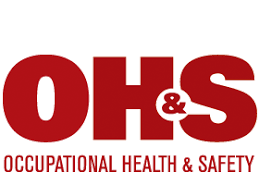Does Your Training Content and Software Align with OSHA Regulations? OH&S Magazine- Jill James/March, 2024
Effective workplace training should include the right training software and content to ensure compliance and enhance workplace safety.
Just like with any governing body, understanding and addressing OSHA requirements can feel daunting. After all, they have published nearly 1,000 standards across four main categories: Construction, Maritime, Agriculture and General Industry.
In many cases, an OSHA regulation is straightforward regarding what is required, but when it comes to employer-provided safety training, things can get a little unclear. There are currently more than 100 OSHA standards where training is required — and things are not consistent from one to another.
Keep reading to learn about some of the different nuances of OSHA requirements and how to identify the right training software and training content that will help you meet — and even exceed — your training needs.
Understanding the Nuances of OSHA Requirements
As noted above, with so many different regulations on the books, it can seem overwhelming. But there are some nuances you should understand when looking into the various safety regulations and OSHA training requirements:
• Industry specificity: OSHA regulations are not a one-size solution. They are categorized into different industries, with specific standards for construction, general industry, maritime, and more. Identifying the regulations specific to your industry is the best place to start.
• Hazard recognition: Safety hazards are an inherent part of every job, from ergonomic hazards to falling hazards to chemical hazards and more. Of course, some jobs present more serious risks than others. Hazard recognition helps you identify the specific hazards in your workplace.
• Frequency: Requirements regarding the frequency of training vary based on the standard and type of hazard. The terms you will see when reviewing OSHA standards include:
– At hire
– Before exposure to a hazard
– At a certain frequency (often annually)
– “If-then” frequencies (a typical example of this is when there is an incident or situation where the worker displays lack of knowledge, then training or retraining is required)
• Updates and changes: OSHA regulations are constantly evolving to keep up with changing work hazards and environments. Keeping your training updated to meet the current standards is essential to avoid non-compliance.
Click here to read the full article from Occupational Health & Safety Magazine- March, 2024



